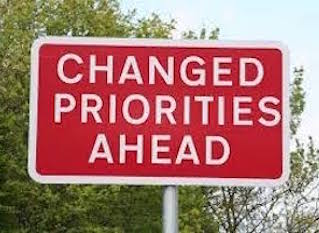A Road Map to the Evolving American Workplace

January 24, 2018 – For American workers, “the ability to do what they do best” is the single most important factor in considering a new job, according to the recently released “State of the American Workplace” report from Gallup.
In all, 60 percent of the employees surveyed said that the ability to do what they do best in a role was “very important” to them.
The majority of men and women, as well as employees across all generations, agreed that this meant more to them than any other aspect of their work.
For employers and recruiters who are seeking the best talent in an ever competitive marketplace, the implications of these findings can be tremendous. More than half of the employees surveyed (51 percent) said they were actively looking for a new job or watching for openings, and 35 percent of workers reported changing jobs within the three years prior to the study’s release last year. Ninety-one percent of employees, the report said, left their company to do so.
“Essentially, ‘do what I do best’ comes down to matching the right person with the right role and the right culture,” said the report. “When employees are a mismatch for their role and organization, they often struggle to succeed or become bored and restless. Their days – even their careers – can feel wasted, along with their sense of purpose. Workers want roles and employers that allow them to make the most of their strengths.”
That is why organizations, in their efforts to attract, recruit and hire the best candidates, must emphasize that they hire and develop individuals based on what they do well. To retain that talent, organizations must then deliver on that promise.
“Organizations have to develop a systematic approach to identifying the right fit and assimilating new hires onto teams where their strengths can be optimized,” said the report. “While a daunting task, it must be addressed, or top talent will never reach their potential at the current organization before leaving for the next opportunity.”
GoDaddy Seeks Employee Experience Leader: Join the People Ops (Human Resources) leadership team at GoDaddy and shape the culture of the company as leader of its Employee Experience team! You’ll partner closely with executives and senior leaders to champion GoDaddy’s culture and values. Apply Now!
Other Key Ingredients
But that is hardly all that the American workplace report, published every four years, discovered about what matters to employees: Besides the ability to do what they do best, employees also placed importance on achieving greater work-life balance and better personal well-being, greater stability and job security, a significant increase in income, and the opportunity to work for a company with a great brand or reputation.
Related: Failure to Develop, Engage and Retain Talent Is Growing
Fifty-three percent of employees said that a job that allows them to have greater work-life balance and better personal well-being is “very important” to them, the study found. “Greater Work-Life Balance and Better Personal Well-Being People are focused on their lives, not only their jobs,” said the report. “They do not want to compromise one at the expense of the other…. Increasingly, people want to be able to adjust their hours and schedules as needed and work remotely when they can without compromising work quality or productivity.”
For employers, this means that it is critical to show employees that their organizations are dedicated to making a greater work-life balance a priority. “Organizations should highlight what they offer to help employees better balance work and life and improve their well-being, but they also need to make this discussion about culture,” said the report. “Flextime and similar perks are attractive, but they are beneficial only when employees truly feel empowered to use them.”
 Work-Life Balance Matters, But Does It Matter Most?
Work-Life Balance Matters, But Does It Matter Most?
Work-life balance is an increasingly critical ingredient in deciding where to work, according to a study by Randstad. That factor was considered important to 45 percent of individuals surveyed from around the world, making it the third highest priority in sizing up would-be employers. Work-life balance moves up a notch, from fourth, in last year’s rankings.
Money Matters
Income also matters. Close to four in 10 employees (41 percent) said that a significant increase in income was “very important” to them when considering a new job.
“Organizations should highlight compensation for candidates and ensure they have real conversations about pay structure and potential during interviews,” said the report. “However, they must also recognize that a viable attraction and recruitment strategy needs to encompass more than a ‘competitive compensation package.’ Talk about pay, but bring more than pay to the table. People make decisions based on both reason and emotion, but they are more likely to be led by emotion. Therefore, organizations should clearly present how candidates can contribute to a role and organization.”
Nor should promotion to a manager or other lead position be the only route to achieving a significant pay increase. “Not all employees have the talent or qualifications to be a manager or leader, but they should be rewarded for continuing to improve in their role,” the report said. “This strategy supports employee specializations and reduces the pressure to promote tenured but unqualified employees into management or leadership roles. As much as possible, compensation should be individualized to each employee. People want to be paid and incentivized based on their situation and contributions.”
Room to Do Better
Benefits and perks also matter, of course. But some of these carry more weight with employees than others. Rock climbing walls and unlimited beverages, for example, are of less consequence. “The benefits and perks that employees truly care about are those that offer them greater flexibility, autonomy and the ability to lead a better life,” said the report.
Related: Job Market Trends to Watch In 2018
And while many organizations do provide such benefits, there remains room for improvement. Flexibility, for example, means a great deal to workers who want greater control over when and where they work, said the report. But flexible schedules and work-from-home options are unrealistic for many positions.
“These programs often are easier to implement in office environments than in manufacturing or retail environments,” said the report. “However, if leaders want to compete for a modern workforce, they should consider weaving some element of flexibility into their culture, such as allowing employees to leave for medical appointments without drawing from vacation time. Organizations that do offer flexibility must ensure they highlight this benefit as part of their attraction and retention strategies.”
Pay and benefits, Gallup stressed, play a key role in engaging workers. Past Gallup research has found that employees who feel that their coworkers lack commitment to quality work can begin to feel resentful. “These employees believe they are carrying more of the workload or producing better outcomes than their team members and should be paid more as a result,” said the report.
 What Candidates Want. Shifting Priorities for Job Seekers
What Candidates Want. Shifting Priorities for Job Seekers
Organizations need talented employees to drive strategy and achieve goals, but with an improving economy finding and recruiting the right people is becoming more difficult. A new report looks at the shifting priorities of job candidates.
Engaging Employees
Gallup devoted considerable attention in its study to employee engagement, and with good reason. In 2016, said the report, 33 percent of America’s employees were engaged in their work, which Gallup defined as “involved in, enthusiastic about and committed to their work and workplace.”
“The latest number is the highest in Gallup’s 15-plus years of tracking employee engagement,” said the report. “But it’s not quite cause for celebration. The majority of employees (51 percent) are not engaged and haven’t been for quite some time. Employee engagement has barely budged over the past decade and a half.”
Related: Why Business Leaders Haven’t Come Around to Employee Engagement
That spells trouble for employers in their ability to retain talent. “The more disconnected employees feel, the greater their readiness to job hop,” said the report. “While 37 percent of engaged employees are looking for jobs or watching for opportunities, higher numbers of not-engaged and actively disengaged employees are doing the same (56 percent and 73 percent, respectively). Actively disengaged employees are almost twice as likely as engaged employees to seek new jobs.”
Although employee engagement has become increasingly important for organizations over the years, Gallup reports that “overall employee engagement in the U.S. remains low.”
Following Through
And while data and measurement for improving engagement are vital, said the report, organizations in the end must actually follow through and engage their workers. And that means more than simply making employees happy.
“Organizations have more success with engagement and improve business performance when they treat employees as stakeholders of their future and the company’s future,” said the study. “They put the focus on concrete performance management activities, such as clarifying work expectations, getting people what they need to do their work, providing development and promoting positive coworker relationships.”
Nor can organizations simply hand managers the results of a new employee survey and expect them to change – or know how to change – their approach. “It requires an organization to take a close look at how critical engagement elements align with its performance development and human capital strategies,” said the report.
Highly engaged organizations have much in common in terms of philosophies and practices. “For example, they know that engagement starts at the top,” said the report. “Their leaders are aligned in prioritizing engagement as a competitive, strategic point of differentiation. They communicate openly and consistently. They place the utmost importance on using the right metrics and hiring and developing great managers.”
Such operations not only hold their managers accountable for their team’s measured engagement level, but they must also answer for how that level relates to the team’s overall performance. The best organizations “ensure that managers are engaging employees from the minute they show up on their first day,” said the report. “These organizations have well-defined and comprehensive development programs for leaders and managers, and they focus on the development of individuals and teams. Employee engagement is a fundamental consideration in their people strategy, not an annual ‘check the box’ activity.”
Related: Three Trends That Will Shape the Future of Talent
Contributed by Scott A. Scanlon, Editor-in-Chief; Dale M. Zupsansky, Managing Editor; Stephen Sawicki, Managing Editor; and Will Schatz, Managing Editor – Hunt Scanlon Media












